This article was co-authored by Adam Shuty and by wikiHow staff writer, Jennifer Mueller, JD. Adam Shuty is a Certified Strength and Conditioning Specialist and owner of ATOMIC Total Fitness, a fitness training studio in New York, New York. With over 15 years of experience, Adam specializes in weightlifting, strength and conditioning, and martial arts. Adam holds a BS in Industrial Engineering from Virginia Polytechnic Institute and State University. In 2014, Adam appeared on the Live With Kelly and Michael Show as one of the top five fitness instructors in the country.
There are 8 references cited in this article, which can be found at the bottom of the page.
This article has been viewed 26,728 times.
If you've ever experienced stiffness, tightness, or pain in your lower back, you're definitely not alone. Lower back pain is relatively common, even among people who are otherwise in pretty good shape. Stretching your lower back can help open up and decompress your spine to ease the pain. And if you do exercises to strengthen the muscles in your lower back and core, you'll have fewer problems down the line. However, if you have consistent back pain, or pain that radiates down into your legs, see a doctor as soon as possible to make sure you don't have a more serious back injury.[1]
Steps
Relieving Back Pain
-
1Place your legs against the wall for a safe stretch. If you're feeling tight or in immediate pain, this stretch is still safe for you to do without injuring yourself further. Roll up a towel to place under your lower back for support. Lay on your back with your feet facing a wall, then raise your feet up until you're leaning your legs straight up against the wall. Rest your hands on your abdomen or leave your arms at your sides flat against the floor. Take deep, long breaths.
- Take at least 8 breaths, then lower your legs. Rest for a minute, then repeat. Do this 4 to 5 times.
- This stretch is safe to do as often as you like to relieve back pain, provided you're in a place where you can do it without disrupting anyone.
- This technique helps your back lay flat against the floor.[2]
-
2Pull both knees toward your chest to further relieve tightness. While lying on your back, bend your knees and lift them up toward your chest. Wrap your arms around your shins to hold your legs closer to your chest. Hold your legs for about 5 seconds, then release to the floor. Repeat 2-3 times.[3]
- You can also do one leg at a time. Keep both knees bent and crunch one knee up toward your chest while leaving the other foot flat on the floor. Hold for about 5 seconds, then repeat with the other leg.
- With your knees held tight against your chest, try spinal rocks for an additional dynamic stretch. Push your knees against your arms or hands to rock forward as though you're doing a sit-up, then rock back down. You'll build momentum after you've done it a few times. Keep going for 4-5 sets of 20-30 rocks.
Advertisement -
3Lower your knees to the side to improve rotational flexibility. Lie on your back with your knees up so your feet are flat on the floor. You can rest your hands on your chest or lay your arms on either side of your body. While keeping your shoulders pinned to the floor, twist your hips to lower your knees to the floor on one side. Go as far as you can without pain. Hold the stretch for 5 to 10 seconds, breathing deeply, then slowly raise your knees back to center. Repeat on the other side.[4]
- Repeat each stretch 2-3 times. You can do this stretch twice a day, such as in the morning and in the evening.
- You can also do a similar rotational exercise while sitting in a chair. Cross your right leg over your left knee, brace your left elbow against the outside of your right knee, then twist and stretch. Repeat on the opposite side. Do this exercise as much as 3-5 times on each side twice a day.[5]
-
4Work your abdominals to improve your lower back flexibility. Lie on your back with your knees bent so that your feet are flat on the floor. Rest your hands on your chest and breathe deeply. Tighten your abdominal muscles as though you're trying to pull your belly button to the floor. Hold the position for about 5 seconds, breathing deeply, then relax.[6]
- This stretch sounds relatively simple but it can be quite challenging, especially if you haven't done a lot of core work. Start with 5 repetitions a day, gradually working up to 30.
Strengthening Your Lower Back
-
1Use the bridge exercise to stabilize your lower back. Lie on your back with your knees bent so that your feet are flat on the floor. Rest your arms along your sides on the floor with your palms down. Contract your glutes (the muscles in your butt) to lift your hips off the floor so that your body becomes like a bridge from your knees to your shoulders. Hold the contraction for 3-5 seconds, breathing deeply, then slowly lower your hips with control.[7]
- Do 3 sets of 10 repetitions of this exercise, resting for about a minute in between sets.
- This exercise works your glutes and helps build strength in your lower back without requiring your lower back to move a lot.
-
2Increase the intensity with a single-leg bridge. Once you've got the hang of the bridge, continue to challenge yourself by extending one leg out flat and keeping the other knee bent. Contract your glutes to lift your hips off the floor and form a bridge. Hold for 3-5 seconds, then lower. Swap the position of your legs and do another bridge to complete one repetition.
- Work up to 3 sets of 10 repetitions of this exercise, resting for about a minute in between sets. If your bridge is wobbly and you have a hard time maintaining control, go back to regular bridges.
-
3Build balanced strength with supine dead bugs. Lie on your back with your arms and legs straight up and perpendicular to the floor — now you have some idea why this is called the "dead bug" exercise. Bend your knees at 90-degree angles. Draw in your abs as though you are pulling your belly button towards the floor and keep them like that for the duration of the exercise. Reach one arm over your head while lowering the opposite leg to the floor. Hold them for a second, then raise them back to the starting position. Repeat on the other side to complete 1 repetition of the exercise.
- Do 10-20 repetitions of this exercise. If you find it challenging when you're just starting out, divide your reps into sets of 5 with a minute rest in between.
- Like the bird-dog exercise, this exercise works opposing limbs to ensure both sides of your lower back have even strength and control.
-
4Add the bird-dog exercise to challenge your stability. While this isn't an exercise you can do lying down, it greatly increases your lower back strength. Get up on your hands and knees with your legs about hip-width apart and your wrists directly below your shoulders. Make sure your neck is straight and not crunched. Lift one leg straight out while simultaneously lifting the opposite arm straight ahead. Hold the position for a second, then lower with control and repeat with the other arm and leg.[8]
- Do 10 repetitions of this exercise on each side (20 total). Engage your core to keep your back and hips straight while doing this exercise.
- If you want to up the intensity of this exercise, add cuff or dumbbell weights to your ankles and hands.
Improving Your Sleep Posture
-
1Choose a mattress that supports the natural curves of your spine. Ideally, you want a firm mattress that doesn't sag. If buying a new mattress isn't in your budget, consider putting your mattress on the floor or placing a hard board underneath it to increase its firmness.[9]
- If you're used to sleeping on a more cushiony surface, it might take some time for you to get used to a firmer mattress, but your back will thank you for it.
- A firm mattress is especially important if you normally sleep on your stomach. Softer mattresses will cause back strain and can also lead to neck discomfort.
-
2Place a pillow behind your knees if you sleep on your back. When you sleep on your back, there's usually a gap between your lower spine and the mattress, so your lower spine isn't supported. Raising your knees shifts the arch in your back so you can lay flatter.[10]
- Experiment with heights to find one that raises your knees enough and is also comfortable for sleeping. You may be more comfortable with 2 pillows instead of just one.
-
3Use a flat pillow under your pelvis if you sleep on your stomach. Sleeping on your stomach can cause your lower spine to compress against itself and lead to further back pain. A flat pillow under your pelvis or stomach will allow you to keep your back mostly flat while you sleep.[11]
- If you use a thicker pillow, you'll likely have a hard time getting comfortable for sleep, and you don't actually have to raise your pelvis up very much to make a positive difference in the position of your spine.
- You might need to experiment a little with the location of the pillow to get it right. For some people, it will feel more comfortable with the pillow up higher, almost under their stomach. Others will feel more comfortable with the pillow in a lower position towards their pelvis.
-
4Tie a rolled towel around your waist if you change positions frequently. If you move around a lot in your sleep, it may not do you any good to be surrounded by pillows. A rolled towel or blanket tied around your waist will always be in the correct spot to support your lower back no matter what position you end up in.[12]
- If you look online or at sleep specialty stores, you can also find lumbar pillows that are designed specifically for this purpose.
Expert Q&A
-
QuestionHow can I stretch my back to curb lower back pain?
 Adam ShutyAdam Shuty is a Certified Strength and Conditioning Specialist and owner of ATOMIC Total Fitness, a fitness training studio in New York, New York. With over 15 years of experience, Adam specializes in weightlifting, strength and conditioning, and martial arts. Adam holds a BS in Industrial Engineering from Virginia Polytechnic Institute and State University. In 2014, Adam appeared on the Live With Kelly and Michael Show as one of the top five fitness instructors in the country.
Adam ShutyAdam Shuty is a Certified Strength and Conditioning Specialist and owner of ATOMIC Total Fitness, a fitness training studio in New York, New York. With over 15 years of experience, Adam specializes in weightlifting, strength and conditioning, and martial arts. Adam holds a BS in Industrial Engineering from Virginia Polytechnic Institute and State University. In 2014, Adam appeared on the Live With Kelly and Michael Show as one of the top five fitness instructors in the country.
Certified Strength & Conditioning Specialist There are a dozen different stretches that will work, but if you've got some back pain the first step is always going to be to relax. If you can just breathe and take things slow, your muscles will release some of that tension and the pain should soften up.
There are a dozen different stretches that will work, but if you've got some back pain the first step is always going to be to relax. If you can just breathe and take things slow, your muscles will release some of that tension and the pain should soften up. -
QuestionWhat's the best stretch for lower back pain?
 Adam ShutyAdam Shuty is a Certified Strength and Conditioning Specialist and owner of ATOMIC Total Fitness, a fitness training studio in New York, New York. With over 15 years of experience, Adam specializes in weightlifting, strength and conditioning, and martial arts. Adam holds a BS in Industrial Engineering from Virginia Polytechnic Institute and State University. In 2014, Adam appeared on the Live With Kelly and Michael Show as one of the top five fitness instructors in the country.
Adam ShutyAdam Shuty is a Certified Strength and Conditioning Specialist and owner of ATOMIC Total Fitness, a fitness training studio in New York, New York. With over 15 years of experience, Adam specializes in weightlifting, strength and conditioning, and martial arts. Adam holds a BS in Industrial Engineering from Virginia Polytechnic Institute and State University. In 2014, Adam appeared on the Live With Kelly and Michael Show as one of the top five fitness instructors in the country.
Certified Strength & Conditioning Specialist I'd recommend lying down on a flat surface with a chair in front of you. Then, you bend your knees to a 90-degree angle and rest your calves on the chair. From there, simply push your lower back down a bit to add a bit of flexion.
I'd recommend lying down on a flat surface with a chair in front of you. Then, you bend your knees to a 90-degree angle and rest your calves on the chair. From there, simply push your lower back down a bit to add a bit of flexion. -
QuestionWhy does it feel good to lie down on the ground when I have back pain?
 Adam ShutyAdam Shuty is a Certified Strength and Conditioning Specialist and owner of ATOMIC Total Fitness, a fitness training studio in New York, New York. With over 15 years of experience, Adam specializes in weightlifting, strength and conditioning, and martial arts. Adam holds a BS in Industrial Engineering from Virginia Polytechnic Institute and State University. In 2014, Adam appeared on the Live With Kelly and Michael Show as one of the top five fitness instructors in the country.
Adam ShutyAdam Shuty is a Certified Strength and Conditioning Specialist and owner of ATOMIC Total Fitness, a fitness training studio in New York, New York. With over 15 years of experience, Adam specializes in weightlifting, strength and conditioning, and martial arts. Adam holds a BS in Industrial Engineering from Virginia Polytechnic Institute and State University. In 2014, Adam appeared on the Live With Kelly and Michael Show as one of the top five fitness instructors in the country.
Certified Strength & Conditioning Specialist So, there are all these nerves running through your spine. If you have any trauma or muscle inflammation, it can pinch those nerves and cause some irritation. Lying on your back takes some of the pressure off of those nerves and give your back a break.
So, there are all these nerves running through your spine. If you have any trauma or muscle inflammation, it can pinch those nerves and cause some irritation. Lying on your back takes some of the pressure off of those nerves and give your back a break.
Warnings
- Consult your doctor before you start any new exercise program, especially if you have a history of back injuries.⧼thumbs_response⧽
- See a doctor as soon as possible if you have consistent back pain that doesn't improve or gets worse over the course of a week, or if you have back pain that radiates down into your legs.[13]⧼thumbs_response⧽
- If any of the stretches or exercises in this article causes pain, stop the activity immediately. Seek guidance from your doctor, a chiropractor, or a physical therapist.[14]⧼thumbs_response⧽
References
- ↑ https://my.clevelandclinic.org/health/articles/4485-back-health-and-posture
- ↑ Adam Shuty. Certified Strength & Conditioning Specialist. Expert Interview. 25 June 2021.
- ↑ https://www.nhsinform.scot/illnesses-and-conditions/muscle-bone-and-joints/exercises/exercises-for-back-pain#double-knee-hug
- ↑ https://uhs.berkeley.edu/sites/default/files/lowbackpain.pdf
- ↑ https://www.mayoclinic.org/healthy-lifestyle/adult-health/multimedia/back-pain/sls-20076265?s=7
- ↑ https://uhs.berkeley.edu/sites/default/files/lowbackpain.pdf
- ↑ https://orthoinfo.aaos.org/globalassets/pdfs/2017-rehab_spine.pdf
- ↑ https://orthoinfo.aaos.org/globalassets/pdfs/2017-rehab_spine.pdf
- ↑ https://my.clevelandclinic.org/health/articles/4485-back-health-and-posture
- ↑ https://www.urmc.rochester.edu/encyclopedia/content.aspx?ContentTypeID=1&ContentID=4460
- ↑ https://www.urmc.rochester.edu/encyclopedia/content.aspx?ContentTypeID=1&ContentID=4460
- ↑ https://my.clevelandclinic.org/health/articles/4485-back-health-and-posture
- ↑ https://www.ninds.nih.gov/health-information/patient-caregiver-education/fact-sheets/low-back-pain-fact-sheet
- ↑ https://my.clevelandclinic.org/health/articles/4485-back-health-and-posture
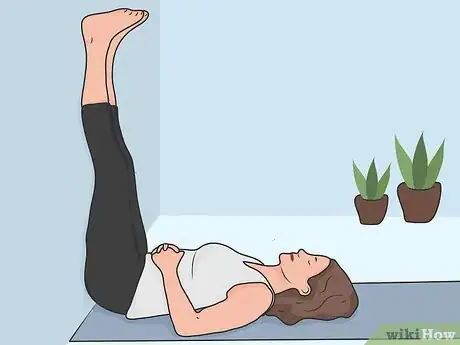

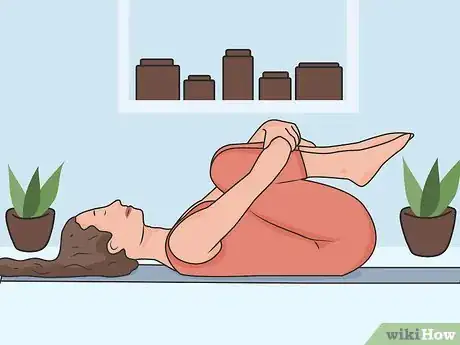
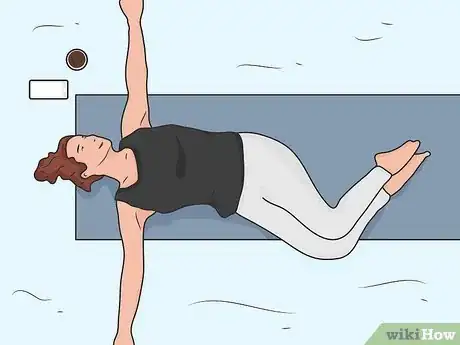
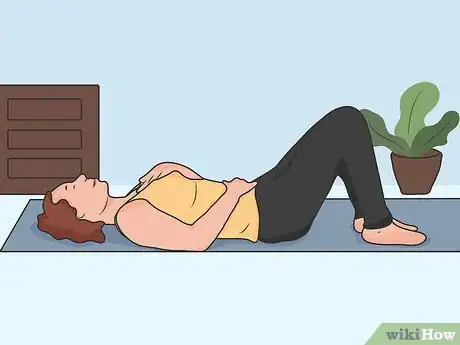
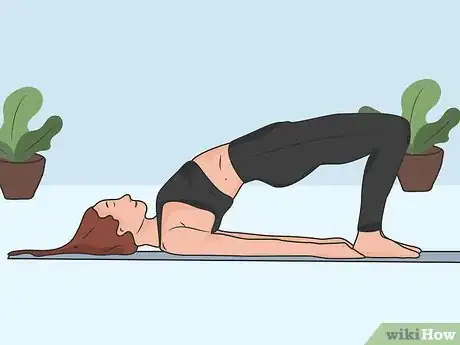
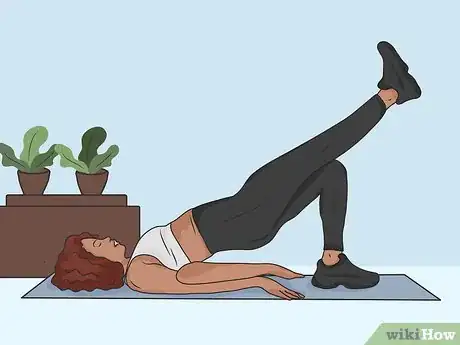
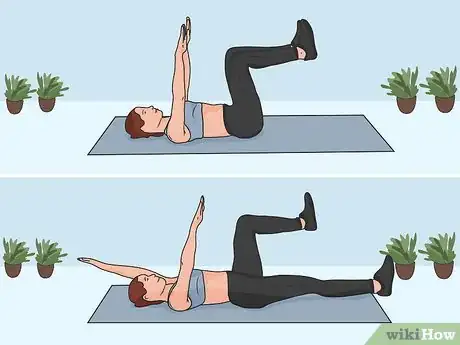
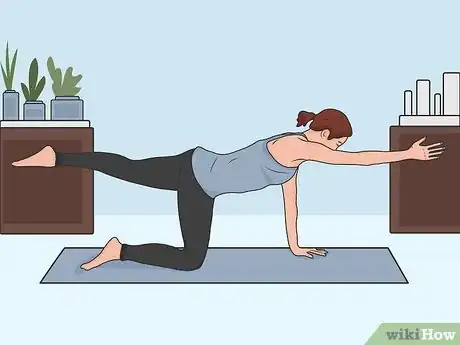
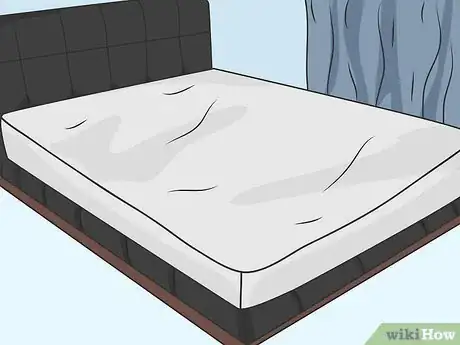
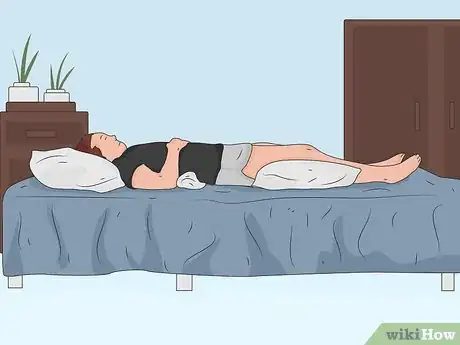
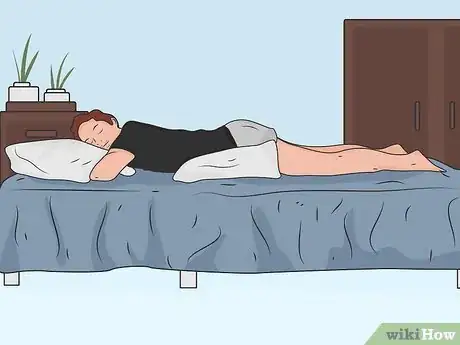
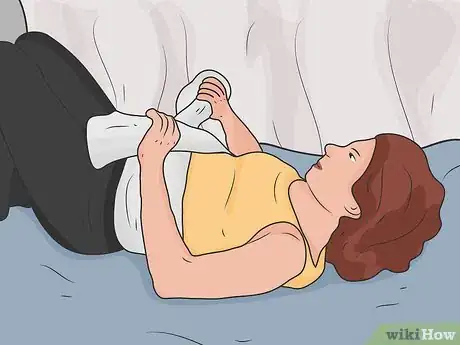
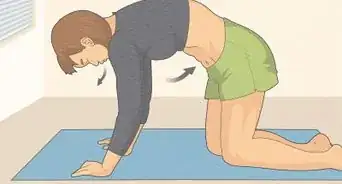
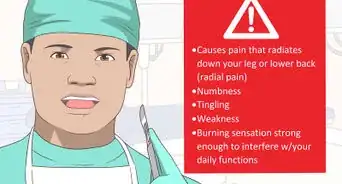




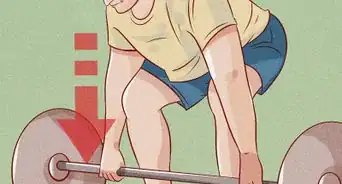
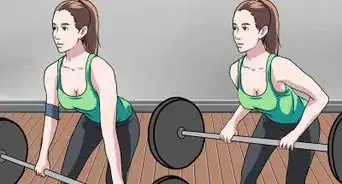
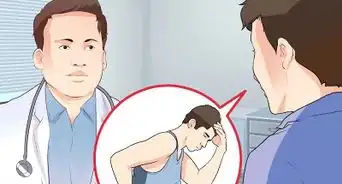






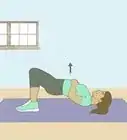


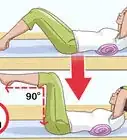



































Medical Disclaimer
The content of this article is not intended to be a substitute for professional medical advice, examination, diagnosis, or treatment. You should always contact your doctor or other qualified healthcare professional before starting, changing, or stopping any kind of health treatment.
Read More...